第51章 THE SECOND ENNEAD(23)
Such completions of a Reality cannot be called qualities since they are its Acts emanating from the Reason-Principles and from the essential powers.A quality is something persistently outside Reality;it cannot appear as Reality in one place after having figured in another as quality; its function is to bring in the something more after the Reality is established, such additions as virtue, vice, ugliness, beauty, health, a certain shape.On this last, however, it may be remarked that triangularity and quadrangularity are not in themselves qualities, but there is quality when a thing is triangular by having been brought to that shape; the quality is not the triangularity but the patterning to it.The case is the same with the arts and avocations.
Thus: Quality is a condition superadded to a Reality whose existence does not depend upon it, whether this something more be a later acquirement or an accompaniment from the first; it is something in whose absence the Reality would still be complete.It will sometimes come and go, sometimes be inextricably attached, so that there are two forms of Quality, the moveable and the fixed.
3.The Whiteness, therefore, in a human being is, clearly, to be classed not as a quality but as an activity- the act of a power which can make white; and similarly what we think of as qualities in the Intellectual Realm should be known as activities; they are activities which to our minds take the appearance of quality from the fact that, differing in character among themselves, each of them is a particularity which, so to speak, distinguishes those Realities from each other.
What, then, distinguishes Quality in the Intellectual Realm from that here, if both are Acts?
The difference is that these ["Quality-Activities"] in the Supreme do not indicate the very nature of the Reality [as do the corresponding Activities here] nor do they indicate variations of substance or of [essential] character; they merely indicate what we think of as Quality but in the Intellectual Realm must still be Activity.
In other words this thing, considered in its aspect as possessing the characteristic property of Reality is by that alone recognised as no mere Quality.But when our reason separates what is distinctive in these ["Quality-Activities"]- not in the sense of abolishing them but rather as taking them to itself and making something new of them- this new something is Quality: reason has, so to speak, appropriated a portion of Reality, that portion manifest to it on the surface.
By this analogy, warmth, as a concomitant of the specific nature of fire, may very well be no quality in fire but an Idea-Form belonging to it, one of its activities, while being merely a Quality in other things than fire: as it is manifested in any warm object, it is not a mode of Reality but merely a trace, a shadow, an image, something that has gone forth from its own Reality- where it was an Act- and in the warm object is a quality.
All, then, that is accident and not Act; all but what is Idea-form of the Reality; all that merely confers pattern; all this is Quality: qualities are characteristics and modes other than those constituting the substratum of a thing.
But the Archetypes of all such qualities, the foundation in which they exist primarily, these are Activities of the Intellectual Beings.
And; one and the same thing cannot be both Quality and non-quality: the thing void of Real-Existence is Quality; but the thing accompanying Reality is either Form or Activity: there is no longer self-identity when, from having its being in itself, anything comes to be in something else with a fall from its standing as Form and Activity.
Finally, anything which is never Form but always accidental to something else is Quality unmixed and nothing more.
SEVENTH TRACTATE.
ON COMPLETE TRANSFUSION.
1.Some enquiry must be made into what is known as the complete transfusion of material substances.
Is it possible that fluid be blended with fluid in such a way that each penetrate the other through and through? or- a difference of no importance if any such penetration occurs- that one of them pass completely through the other?
Those that admit only contact need not detain us.They are dealing with mixture, not with the coalescence which makes the total a thing of like parts, each minutest particle being composed of all the combined elements.
But there are those who, admitting coalescence, confine it to the qualities: to them the material substances of two bodies are in contact merely, but in this contact of the matter they find footing for the qualities of each.
Their view is plausible because it rejects the notion of total admixture and because it recognizes that the masses of the mixing bodies must be whittled away if there is to be mixture without any gap, if, that is to say, each substance must be divided within itself through and through for complete interpenetration with the other.Their theory is confirmed by the cases in which two mixed substances occupy a greater space than either singly, especially a space equal to the conjoined extent of each: for, as they point out, in an absolute interpenetration the infusion of the one into the other would leave the occupied space exactly what it was before and, where the space occupied is not increased by the juxtaposition, they explain that some expulsion of air has made room for the incoming substance.
They ask further, how a minor quantity of one substance can be spread out so as to interpenetrate a major quantity of another.In fact they have a multitude of arguments.
Those, on the other hand, that accept "complete transfusion,"might object that it does not require the reduction of the mixed things to fragments, a certain cleavage being sufficient: thus, for instance, sweat does not split up the body or even pierce holes in it.